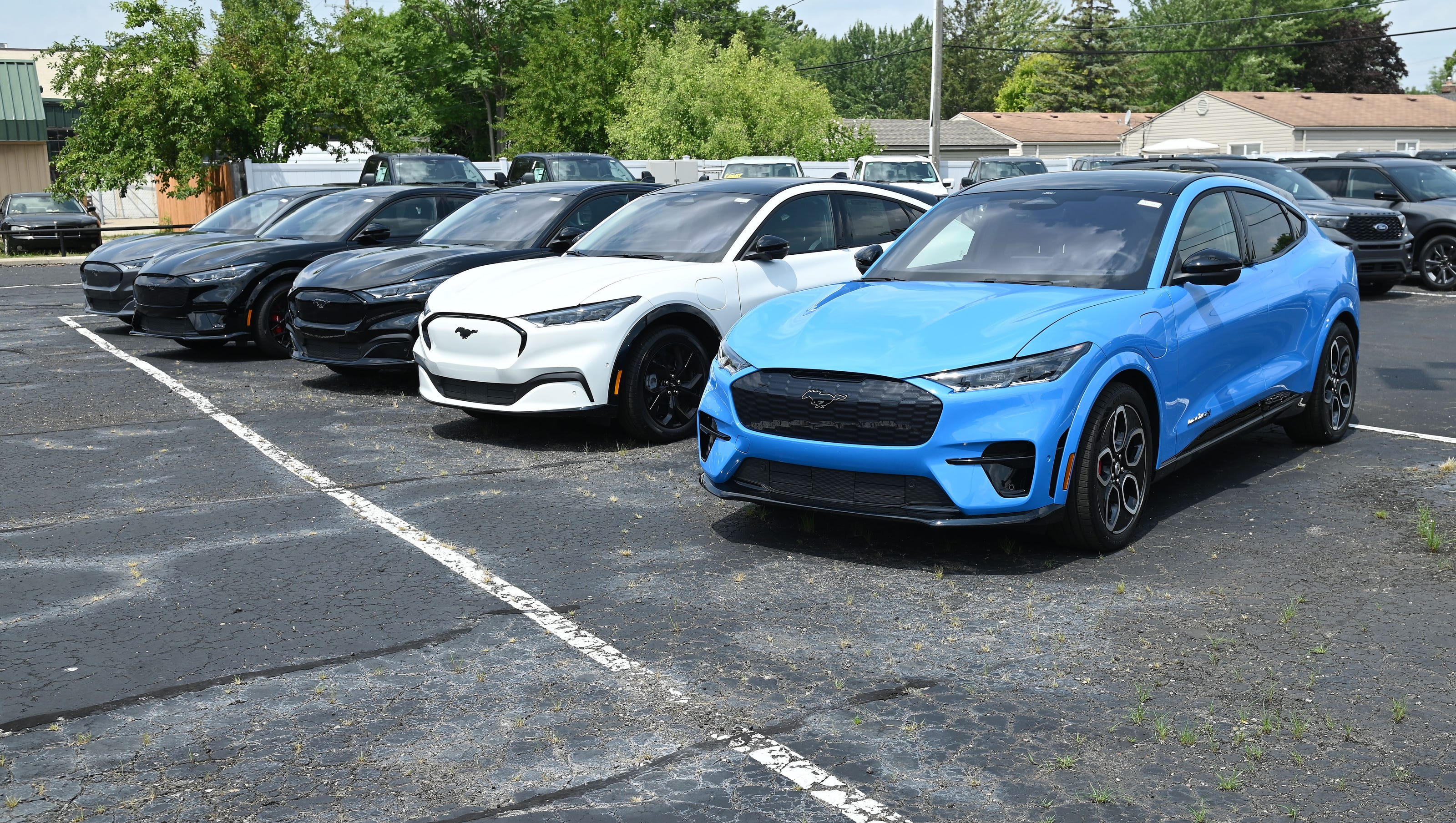Auto Dealers Intensify Fight Against EV Sales Requirements

Table of Contents
Economic Concerns Driving Dealer Opposition
The core of auto dealer resistance to EV sales requirements stems from significant economic challenges. The transition to electric vehicles necessitates substantial investments and presents unique operational hurdles.
Investment Costs and Infrastructure
Implementing EV sales mandates places a heavy financial burden on auto dealers. The high upfront investment required for EV charging infrastructure is a major concern. Many dealerships lack the resources to install and maintain the necessary charging stations, particularly fast-charging units that are becoming increasingly essential for consumer adoption. Furthermore, government support for these crucial infrastructure upgrades has been insufficient in many regions.
- High installation costs of EV charging stations: These can range from several thousand to tens of thousands of dollars per charger, depending on the type and capacity.
- Employee training expenses: Dealerships need to train their sales and service staff on the specifics of EVs, including charging, battery maintenance, and troubleshooting.
- Software and technology upgrades: Managing EV inventory and charging schedules often requires new software and systems, adding to the overall cost.
- Land acquisition and expansion: Some dealerships require land expansion to accommodate the necessary charging infrastructure.
These significant infrastructure costs related to EV charging stations represent a major barrier to entry for many dealerships, particularly smaller, independent businesses. The lack of robust financial assistance from the government exacerbates this financial burden and fuels the resistance to EV sales requirements.
Inventory Management Challenges
Predicting EV demand accurately is proving exceptionally difficult, leading to significant inventory management challenges for auto dealers. Compared to gasoline-powered vehicles, EVs often require more specialized storage and handling due to their battery technology and charging requirements. This leads to:
- Higher storage costs: Dedicated spaces with climate control and potential safety measures may be needed for EV batteries, adding to overhead.
- Increased risk of unsold inventory: Misjudging consumer demand can lead to substantial financial losses due to unsold EVs.
- Complex supply chain issues: The global supply chain for EV components and batteries is prone to disruptions, affecting inventory levels and sales forecasts.
- Difficulties with reconditioning and resale: Used EVs may require more complex and costly reconditioning compared to gasoline vehicles, impacting the used car market.
These factors contribute to a challenging and uncertain environment for dealers forced to comply with EV sales requirements.
Consumer Demand and Market Readiness
While the push for electric vehicles is driven by environmental concerns, current consumer demand and market readiness pose significant obstacles.
Limited Consumer Adoption
The current market share of EVs remains significantly lower compared to gasoline-powered vehicles. Several factors contribute to this slower-than-expected adoption rate:
- Range anxiety: Consumers remain concerned about the driving range of EVs and the availability of charging stations along their routes.
- Charging infrastructure limitations: The lack of widespread and reliable charging infrastructure in many areas continues to hinder EV adoption.
- Higher purchase price: The initial purchase price of EVs is often higher than comparable gasoline vehicles, making them inaccessible to many consumers.
- Lack of consumer awareness: Many consumers are still unfamiliar with the benefits and practical aspects of owning an EV.
Addressing these concerns is crucial for boosting consumer acceptance of EVs and mitigating dealer resistance to mandates.
The Role of Government Incentives and Subsidies
Government incentives and subsidies play a vital role in shaping consumer behavior and market acceptance of EVs. While some government programs exist, their effectiveness varies widely:
- Varying levels of incentives across states: The amount and type of incentives offered differ considerably between states, creating an uneven playing field.
- Inefficient targeting of subsidies: Some subsidy programs may not effectively reach the target demographic or encourage widespread adoption.
- Limited focus on charging infrastructure subsidies: Insufficient funding for the expansion of public charging infrastructure undermines EV adoption.
More comprehensive and impactful government support, including increased investment in charging infrastructure and more targeted consumer incentives, is essential for driving EV adoption and easing the concerns of auto dealers.
Legislative and Legal Battles
Auto dealers are actively engaging in legislative and legal battles to challenge or modify EV sales requirements.
Lobbying Efforts and Political Pressure
Auto dealer associations are exerting considerable lobbying efforts at both the state and federal levels to influence the implementation of EV sales requirements. These efforts often focus on:
- Delaying or weakening mandates: Advocating for less stringent timelines and targets for EV sales.
- Seeking increased government support: Requesting more funding for infrastructure upgrades and consumer incentives.
- Highlighting the economic impact on dealers: Emphasizing the financial strain of complying with mandates on dealerships.
These lobbying efforts highlight the significant political pressure surrounding EV sales mandates.
Potential Legal Recourse and Litigation
In some states, auto dealers have explored or initiated legal action against EV sales requirements. These lawsuits often center on:
- Challenges to the constitutionality of the mandates: Arguing that they are an overreach of government authority.
- Claims of unfair economic burdens: Highlighting the disproportionate financial impact on dealerships.
- Arguments based on market readiness: Asserting that the current market isn’t ready for such aggressive EV adoption targets.
The outcome of these legal battles will have significant implications for the future of EV sales mandates and the automotive industry.
Conclusion: Navigating the Future of EV Sales and Dealer Adaptations
The resistance to stringent EV sales requirements highlights a complex interplay of economic concerns, consumer market realities, and legislative challenges. Auto dealers face substantial financial burdens related to infrastructure upgrades, inventory management complexities, and the uncertainties of market demand. While the transition to electric vehicles is crucial for environmental sustainability, a balanced approach is needed that acknowledges the economic realities faced by auto dealers and fosters a smoother transition. Staying informed about the ongoing debate surrounding EV sales requirements is crucial for understanding the future of the automotive industry. We encourage you to follow industry publications and engage with automotive advocacy groups to stay abreast of these evolving dynamics and advocate for policies that balance environmental progress with economic viability for all stakeholders.

Featured Posts
-
 Get Ready For Kentucky Derby 151 A Pre Race Checklist
May 05, 2025
Get Ready For Kentucky Derby 151 A Pre Race Checklist
May 05, 2025 -
 Australia Votes Albaneses Labor Party Leading In Pre Election Polls
May 05, 2025
Australia Votes Albaneses Labor Party Leading In Pre Election Polls
May 05, 2025 -
 Holi Heatwave South Bengal Temperatures Reach Near 38 C
May 05, 2025
Holi Heatwave South Bengal Temperatures Reach Near 38 C
May 05, 2025 -
 Another Simple Favor Blake Lively And Anna Kendricks Red Carpet Chemistry
May 05, 2025
Another Simple Favor Blake Lively And Anna Kendricks Red Carpet Chemistry
May 05, 2025 -
 Ufc 314 Fight Card Volkanovski Vs Lopes Ppv Event Breakdown
May 05, 2025
Ufc 314 Fight Card Volkanovski Vs Lopes Ppv Event Breakdown
May 05, 2025
Latest Posts
-
 Rimeik Body Heat T Ha Protagonistisei I Emma Stooyn
May 05, 2025
Rimeik Body Heat T Ha Protagonistisei I Emma Stooyn
May 05, 2025 -
 I Emma Stooyn Sto Rimeik Tis Body Heat Pithanes Ekselikseis
May 05, 2025
I Emma Stooyn Sto Rimeik Tis Body Heat Pithanes Ekselikseis
May 05, 2025 -
 Sygkroyseis Sta Oskar I Emma Stooyn Kai I Margkaret Koyalei
May 05, 2025
Sygkroyseis Sta Oskar I Emma Stooyn Kai I Margkaret Koyalei
May 05, 2025 -
 Eriksan I Alitheia Gia Tin Emma Stooyn Kai Tin Margkaret Koyalei Sta Oskar
May 05, 2025
Eriksan I Alitheia Gia Tin Emma Stooyn Kai Tin Margkaret Koyalei Sta Oskar
May 05, 2025 -
 Oskar 2024 I Entasi Metaksy Emma Stooyn Kai Margkaret Koyalei
May 05, 2025
Oskar 2024 I Entasi Metaksy Emma Stooyn Kai Margkaret Koyalei
May 05, 2025
